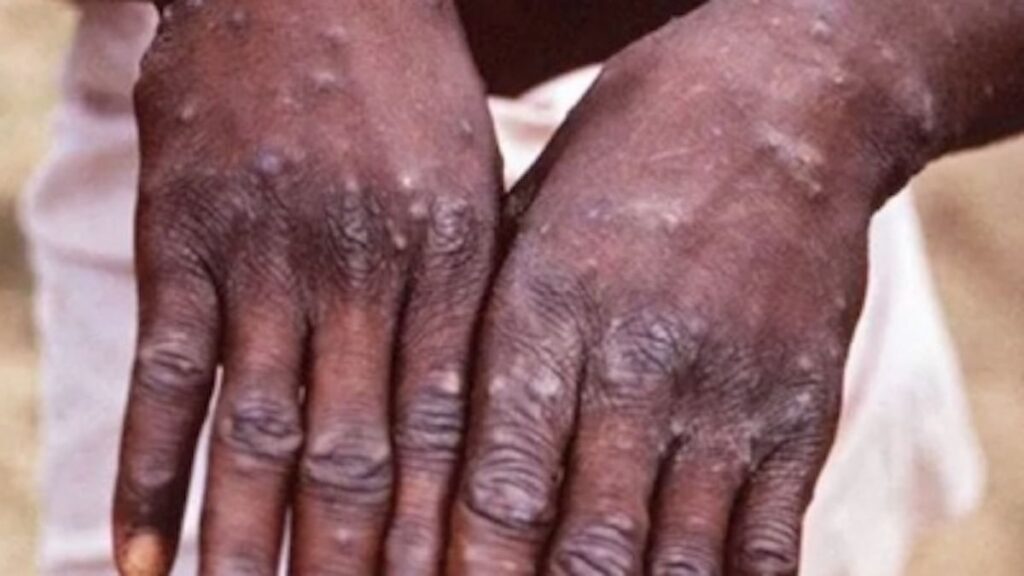The world has not yet overcome the deadly Coronavirus pandemic. But we are now haunted by another deadly infection- the monkeypox. As one case of monkeypox was detected in Kerala, the Union Health Ministry issued guidelines for monkeypox management on Saturday and a team was rushed to Kerala.
Kerala health minister has said that there is no immediate cause of worry as the patient is under observation. The World Health Organisation has also issued guidelines in the wake of the spread of the disease. As of 15 June, a total of 2103 laboratory confirmed cases and one probable case, including one death, have been reported to WHO.
Here are some important things to know about monkeypox as suggested by the WHO: Monkeypox is caused by monkeypox virus, a member of the Orthopoxvirus genus in the family Poxviridae. Monkeypox is usually a self-limited disease with the symptoms lasting from 2 to 4 weeks. Severe cases can occur.
In recent times, the case fatality ratio has been around 3–6%. Vaccines used during the smallpox eradication programme also provided protection against monkeypox. Newer vaccines have been developed of which one has been approved for prevention of monkeypoxMonkeypox is transmitted to humans through close contact with an infected person or animal, or with material contaminated with the virus.
Monkeypox virus is transmitted from one person to another by close contact with lesions, body fluids, respiratory droplets and contaminated materials such as bedding. Monkeypox is a viral zoonotic disease that occurs primarily in tropical rainforest areas of central and west Africa and is occasionally exported to other regions. An antiviral agent developed for the treatment of smallpox has also been licensed for the treatment of monkeypox.
The clinical presentation of monkeypox resembles that of smallpox, a related orthopoxvirus infection which was declared eradicated worldwide in 1980. Monkeypox is less contagious than smallpox and causes less severe illness. Monkeypox typically presents clinically with fever, rash and swollen lymph nodes and may lead to a range of medical complications.
Health Ministry of India has also issued some guidelines for the management of the disease. The guidelines mention that: 1. Health workers and household members are at a greater risk of infection.
Health workers caring for patients with suspected or confirmed monkeypox virus infection, or handling specimens from them, should implement standard infection control and precautions. 2. International passengers should also avoid contact with contaminated materials used by sick people such as clothing, bedding or materials used in healthcare settings, or that came into contact with infected animals, the guidelines said.
3. In addition, people who develop symptoms suggestive of monkeypox like fever and skin rash and were in an area where monkeypox has been reported or had come in contact with a person who might have monkeypox have been advised to immediately consult the nearest health facility. Testing continues to be a challenge for the monkeypox virus that has infected more than 6,000 people in 58 countries, both endemic and non-endemic, the World Health Organization (WHO) said.
Low testing means that cases go undetected, further increasing the risk of community spread, WHO Director-General Tedros Adhanom Ghebreyesus said in a press briefing on Wednesday. He said the WHO is closely following the cases and “the scale and spread of the virus” is concerning. “Across the world, there have now been more than 6,000 cases recorded in 58 countries.
Testing remains a challenge and it’s highly probable that there are a significant number of cases not being picked up,” Ghebreyesus said on July 7. Medical experts in the US and UK had earlier voiced concerns against slow testing. .
From: nationalheraldindia
URL: https://www.nationalheraldindia.com/health/monkeypox-should-we-be-scared-of-it-a-look-at-the-symptoms-and-guidelines-to-be-aware-of
